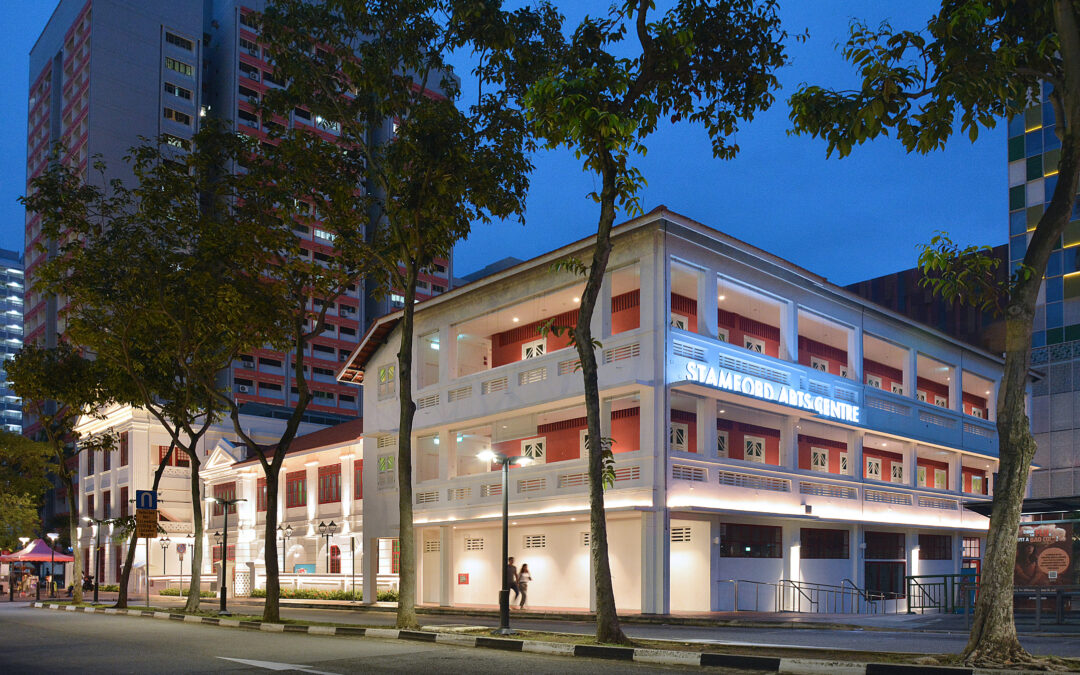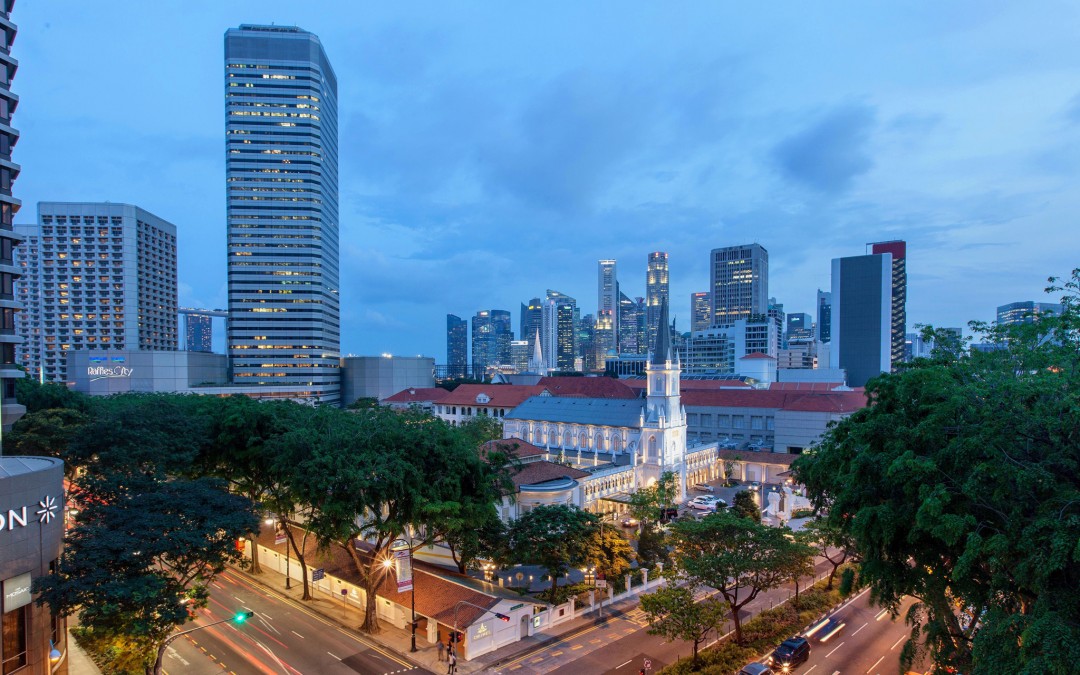
by admin | Feb 21, 2017 | |
Stamford Arts Centre, Singapore Built in the 1920s by the Japan Club and used as a Japanese elementary school up till WWII, Stamford Arts Centre consists of three different blocks constructed in the Neo-Classical and Art Deco styles that has undergone changes in use and inhabitants over the last few decades. The project tackles the challenge of conserving while refreshing the 100-year-old buildings. Rather than the application of broad-stroke architectural massing intervention which could be invasive to the spatial quality of the conservation buildings, a series of intimate interventions and architectural strategies have been employed instead to retain the building existing character as much as possible. The external facade which has peeled and deteriorated with time were completely restored with rising damp treatment and painted in a timeless colour with the preserved timber fenestrations emphasized in a distinctive fiery red as a nod to the heritage and tradition of Asian culture and arts. The conserved buildings are elegantly illuminated at night, accentuating the decorative elements such as the pediments, frieze and fluted pilasters, crafting Stamford Arts Centre identity as a beacon along Waterloo Street. In conjunction, new entry points have been carved into the building to improve visual connectivity and footfall into the compound. Recognizing that the existing courtyards were core circulation spaces inhabited by the art residents for various purposes such as extensions of their studio spaces but were either unable to be used during adverse weather or visually dark and unappealing due to temporary additions of zinc roofing, glass volumes were inserted into the courtyards using skylights in the pattern of tropical art deco motifs and...

by admin | Oct 2, 2014 | |
C.H.I.J.M.E.S, Singapore CHIJMES is located along Victoria Street in the downtown core of the central business district in Singapore. The history monument has the potential to draw a significant number of locals, tourists and architectural lovers to experience the spirit of colonial history that CHIJMES has to offer. At the heart of CHIJMES is the iconic chapel. Constructed in the neo-classical gothic style, the restored building is replete with terrazzo tiled floors, twining stairs, delicate stained glass panels and elegant Corinthian columns. The Anglo-French architecture reflects the influence of the European colonialists in early Singapore’s art and architecture. One would not feel out of place in the Chapel for it partially echoes the interior of numerous Gothic structures found in Europe. Today, the Chapel is used as a multi-purpose function hall to hold events such as weddings and corporate get-together. Within the complex is Caldwell House and Coleman’s house, the latter was built in the late 1840 featuring some intricate plasterwork and unique glass works. Among the many monuments of historical significance in Singapore, none is quite as outstanding as CHIJMES, whether its rich heritage or its laidback charm. Having gone through an extensive upgrading construction in the 1990s, which saw the introduction of retail and dining facilities as well as basement carparking, CHIJMES became a destination that was culturally rich and commercially vibrant. However, patrons to the development was heavily weather-dependent, and this had proved to have a neagtive impact on the commercial profitability of CHIJMES, thus, in this new proposal, it is envisaged that all the various buildings within the development are inter-connected and well sheltered...





Recent Comments